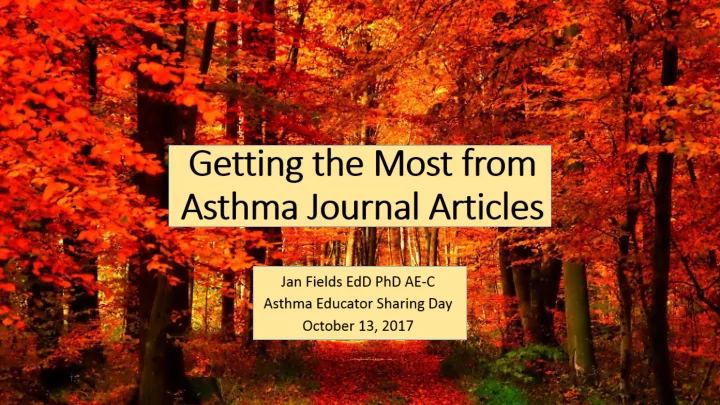

The Golden Circle What How Why
The Golden Circle What How Why
It is estimated that the doubling time of medical knowledge • in 1950 was 50 years • in 1980, 7 years • in 2010, 3.5 years • In 2020 it is projected to be 0.2 years — just 73 days
A group of respiratory medicine experts have called for an overhaul of how asthma and other airways diseases are categorized and treated.
“We believe that the most important cause of this stagnation is a continued reliance on outdated and unhelpful disease labels, treatment and research frameworks, and monitoring strategies, which have reached the stage of unchallenged veneration and have subsequently stifled new thinking.”
0 “This commission feels it is time for a new era in asthma management, where it is more about getting the right treatment to the right patients – so, a precision medicine approach rather than the one-size-fits- all approach we’ve been doing up until now.”
Porter & Jick
Porter & Jick
“Everybody heard it everywhere. It was Porter and Jick. We all used it. We all thought it was gospel.” Porter & Jick
Porter & Jick
Porter & Jick
The Golden Circle What How Why
Keep current with new asthma knowledge Learn to evaluate the strength of the evidence Promote implementation of new knowledge into practice Improve patient outcomes
The Golden Circle What How Why
Begin by reading the introduction, not the abstract
Identify the BIG QUESTION
Summarize the background in five sentences or less
Identify the SPECIFIC QUESTION(S)
Identify the approach
Now read the methods section
Read the results section
Do the results answer the SPECIFIC QUESTION(S)?
Read the conclusion/discussion /Interpretation section
Now, go back to the beginning and read the abstract
Lea earning Activ ctivity ty Working in dyads or triads, take one of the articles on your table and read the abstract aloud. Then try to answer the following questions: • What is the BIG QUESTION? • What work has been done before to answer the BIG QUESTION? • What, according to the authors, needs to be done next?
Checklist for the methods section of a paper • Who is the study about? • Was the design of the study sensible? • Was the study adequately controlled? • Was the study large enough and continued for long enough, and was follow up complete enough, to make the results credible?
Checklist for the methods section of a paper • Who is the study about? • Was the design of the study sensible? • Was the study adequately controlled? • Was the study large enough and continued for long enough, and was follow up complete enough, to make the results credible?
Th Three pri principles of of evid idence-based hea healt lth car are 1. Some evidence is more credible, more believable. We have more confidence in some types of evidence than others. 2. We need systematic summaries of the highest-quality evidence available 3. Evidence by itself never tells you what to do. It’s always evidence in the context of values and preferences.
Checklist for the statistical aspects of a paper • Have the authors set the scene correctly? • Consider paired data, tails, and outliers • Consider correlation, regression and causation • Consider probability and confidence • Have the authors expressed their results in terms of the likely harm or benefit that an individual patient can expect?
Checklist for a Qualitative Research Paper • What are the results? • Are the results valid? • Will the results help me in caring for my patients?
Lea earning Activ ctivity ty Again, working in dyads or triads, take the same article as before and answer the following question: If a quantitative study, • Was the study large enough and continued long enough, and was follow-up complete enough, to make the results credible? If a qualitative study, • What methods did the researcher use to analyze the data — and what quality control measures were implemented?
Sea earchin ing Too ools ls Journal Table of Contents
Sea earchin ing Too ools ls Google Scholar
PubMed Sea earchin ing Too ools ls
Sea earchin ing Too ools ls PubCrawler
Sea earchin ing Too ools ls
Sea earchin ing Too ools ls
Sea earchin ing Too ools ls
Sea earchin ing Too ools ls “Twitter is an underutilized resource in science, but it’s great — if you follow the right people — for keeping your finger on the pulse of new work that is coming out.” Anonymous
Organiz izin ing Too ools ls Mendeley
Organiz izin ing Too ools ls Papers
Organiz izin ing Too ools ls ReadCube
Organiz izin ing Too ools ls JabReb
Reading is to the mind what exercise is to the body. Joseph Addison
Recommend
More recommend